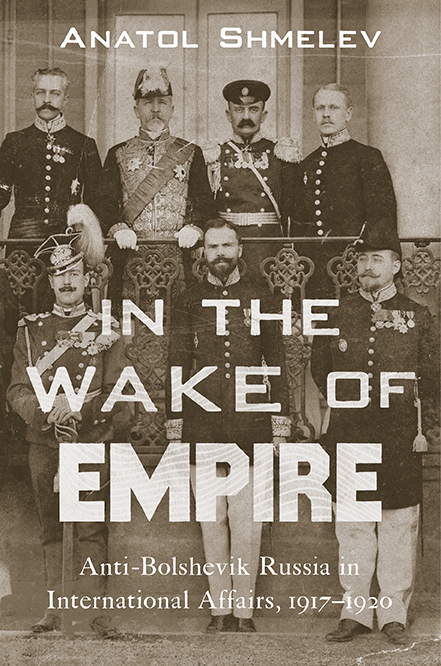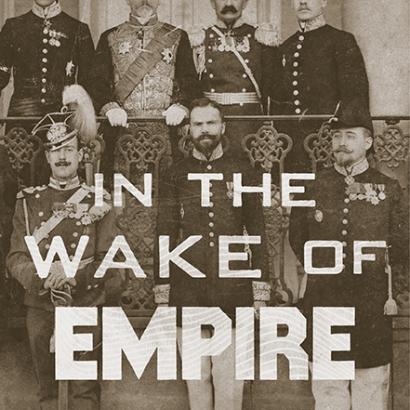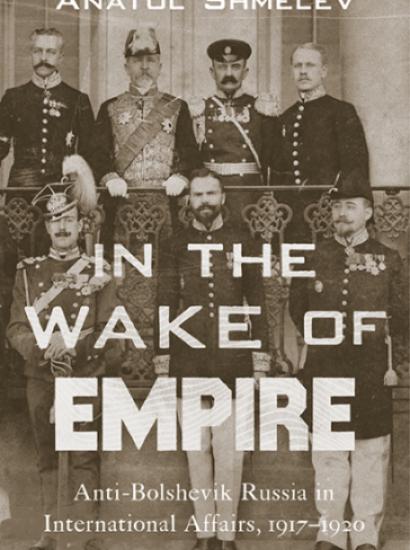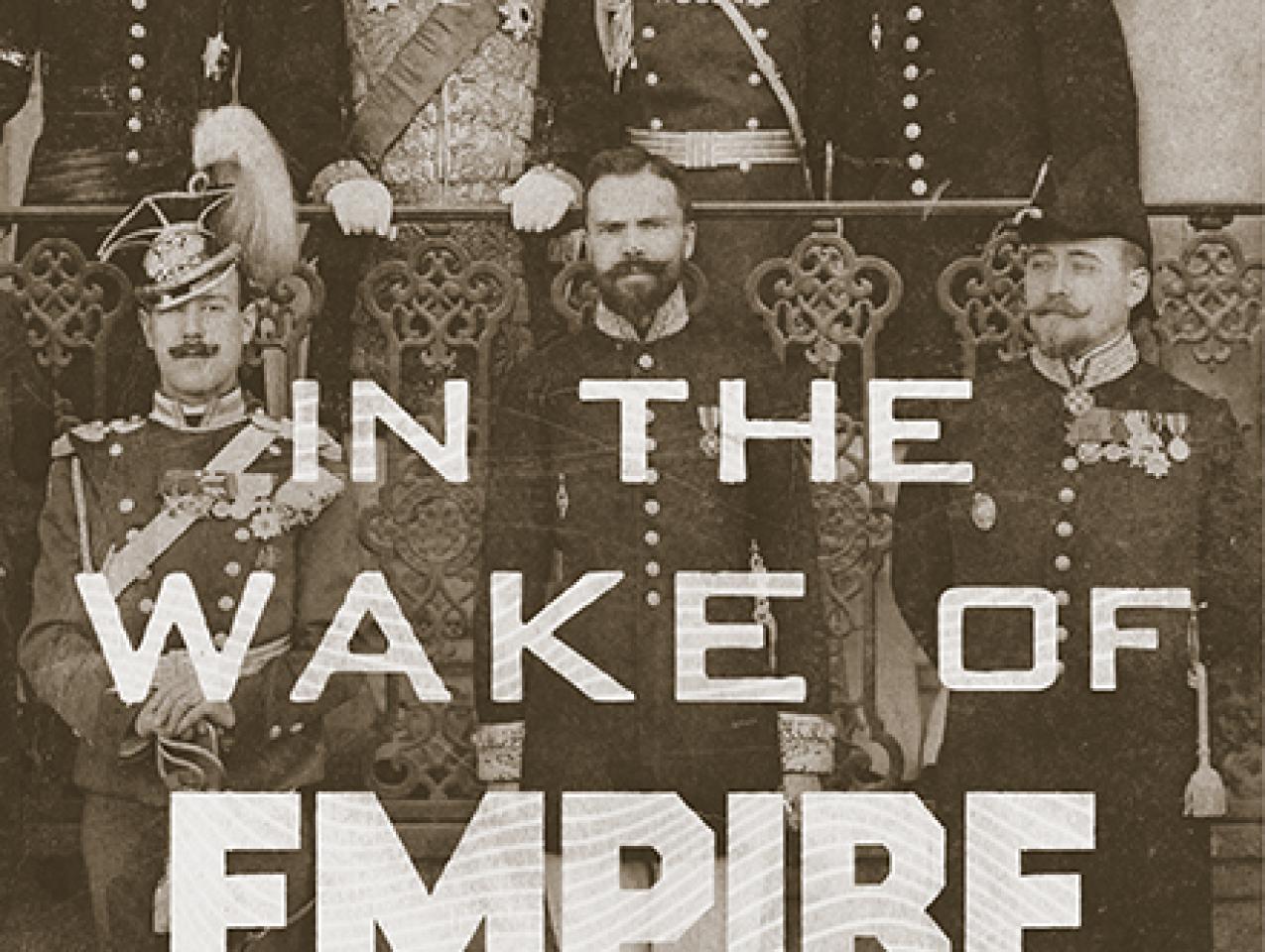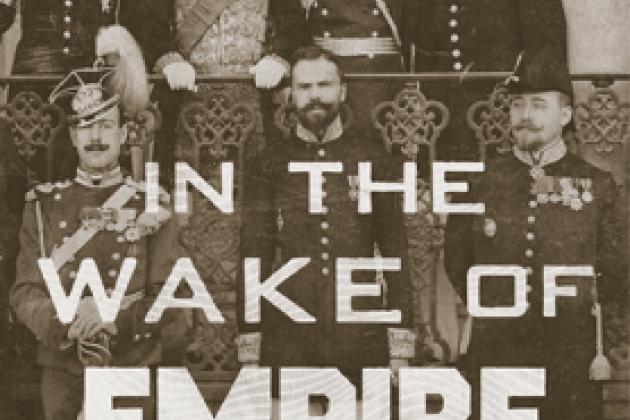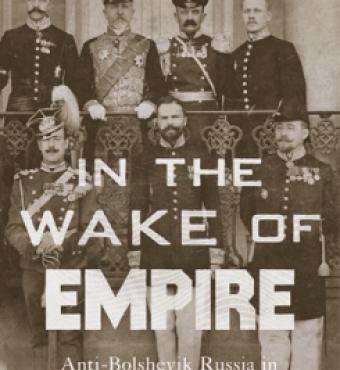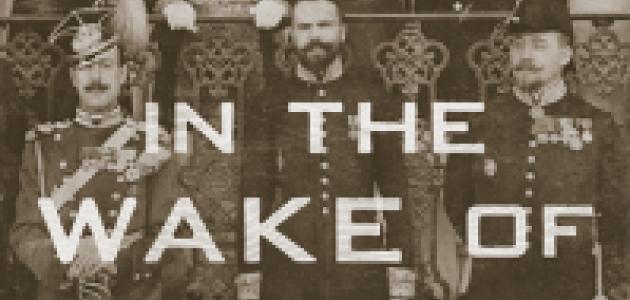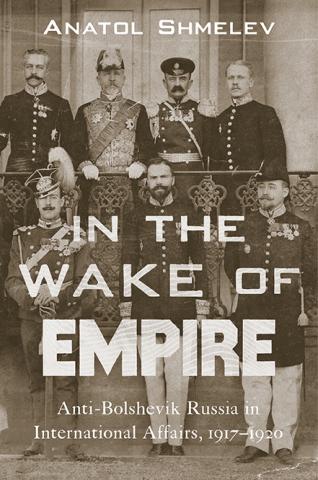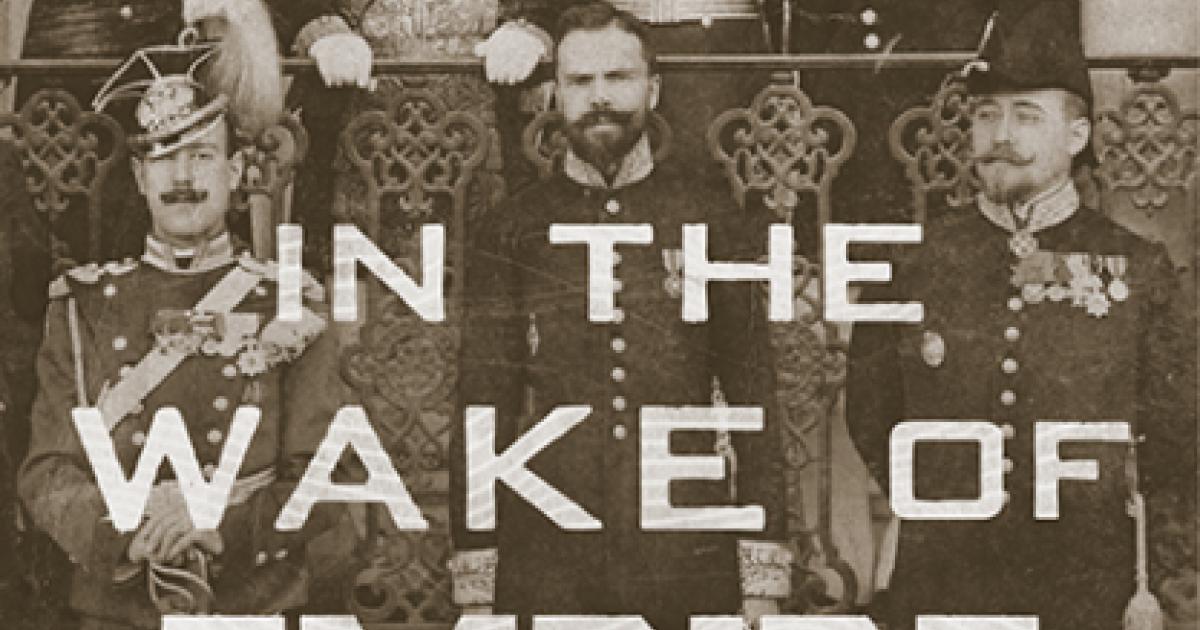by Jonathan Movroydis
In this interview, Research Fellow Anatol Shmelev, curator of the Hoover Library & Archives’ Russia and Eurasia collection, discusses his new book, published by Hoover Institution Press, In the Wake of Empire: Anti-Bolshevik Russia in International Affairs, 1917–1920.
Shmelev explains how, during the civil war in Russia, anti-Bolshevik Whites formed governments throughout the country and projected a foreign policy centered on their platform of “Russia – Great, United, and Indivisible.” He argues that this policy ultimately was unsustainable, in part because the Whites failed to receive sufficient military aid from Allied forces, who did not necessarily welcome a powerful Russia looming over Europe. Shmelev also maintains that, unlike the Bolsheviks, the White movement lacked popular appeal, because they didn’t consider themselves to have the authority to address social, political, and economic issues, including property ownership, until a constituent assembly with lawful authority was established.
Why did you write In the Wake of Empire?
In the Wake of Empire is actually my doctoral dissertation, but in heavily revised form with numerous improvements and additional material. The reason I chose the topic, in the early 1990s, was that there was a lot of literature about Bolshevik foreign policy, but nobody had really written about the foreign policy of the anti-Bolsheviks. Also, at the time, the State Archive of the Russian Federation, which holds the archive of the foreign ministry of Admiral Alexander Kolchak’s government, was finally open and available for unrestricted research. That was a big plus for me, and I was able to access that archive and use those materials for the book.
What role did Hoover Library & Archives’ Russia collection play in the book?
Hoover played an extremely important role, because the Institution contains the papers of most of the leading White figures and organizations outside of Admiral Kolchak’s government. The Hoover Archives houses the records of the Russian embassies in France and the United States, missions in Norway and Greece, and the military agent in Japan. It also includes the papers of General Nikolai Iudenich, Petr Vrangel, and many other significant figures in the anti-Bolshevik movement. Ninety percent of primary sources used for the book are from materials found at the Hoover Institution and the State Archive of the Russian Federation.
Will you describe who were the “Whites” as opposed to the “Reds” in the Russian Civil War?
In February and March of 1917, the Russian Revolution resulted in the abdication of Emperor Nicholas II in favor of a provisional government, which ruled for several months and was then overthrown by the Bolsheviks in October—what we would call November, because a different calendar was used in Russia at the time. Following the Bolshevik takeover, a civil war ensued, because many people objected to the Bolsheviks and their leadership, in particular the costly Brest-Litovsk peace treaty with Germany and the socialist principles they introduced to the state and economy. Since the Bolsheviks had adopted the color red as their banner, the counterrevolutionaries took up the color white. White was also adopted by the factions that opposed the French Revolution in the eighteenth century.
It took the Whites a while to develop their military forces. They began their movement in southern Russia immediately after the Bolshevik takeover, and in March 1918, the Whites gained momentum in the northern Arkhangel’sk and Murmansk regions, thanks to Allied intervention. They also made advances in the east, as a result of the uprising of Czech and Slovak legionnaires along the Trans-Siberian railway. This large force of former POWs were armed and formed into fighting units under the Russian Army to battle for their homeland’s independence against the Austro-Hungarian army. In an attempt to evacuate from Bolshevik Russia after its peace treaty with the Central Powers, this force became stuck, strung out along the Trans-Siberian railway, which they controlled in alliance with the Whites. The objective of the Whites was to defeat the Bolsheviks and reestablish Russia. However, among the Whites there was a wide range of political views on what reestablishing Russia actually meant. The monarchists wanted to restore the imperial crown. Even among this group there was a debate on whether Russia should be an autocratic or a constitutional monarchy.
There were other groups in the White movement as well, including socialists. Thus, this diverse set of viewpoints made it difficult to forge a strong alliance against the Bolsheviks. Eventually the various factions reached a consensus on what their message should be: the idea of a “Russia— Great, United, and Indivisible.” One of the consequences of the revolution was the fragmentation of the former Russian empire into a number of independent states. The Whites argued that in order to maintain a strong Russia, the empire needed to be restored with broad autonomy for these member states.
Will you expand on this concept of “Russia—Great, United, and Indivisible” in terms of specific policy objectives?
The Whites envisioned that domestic policy matters would have been delegated to the future constituent assembly that would decide the form of government within the country. The platform of “Russia—Great, United, and Indivisible” is the center of the White foreign policy. What this meant was that all of the newly independent states—from Finland all the way down to the Transcaucasian states—had to be pulled back into the Russian orbit. This idea is grounded in the historical insecurity of the Russian state in relation to more technologically and economically advanced countries surrounding it, in particular Germany. Russia has also been historically insecure because it has never had effective physical or geographical borders to protect it.
Russia has a long history of invasions from foreign adversaries, the fear of which became lodged deep in the Russian psyche. The Whites’ solution to these threats was for Russia to control as much geographical space as possible, a stratagem that involved preventing smaller independent states from falling into the orbits of Germany or the Ottoman Empire. This is why their main concern was to maintain the empire’s territorial integrity and its status within the great power balance of Europe.
After the Bolshevik takeover in Moscow, what parts of Russia did the Whites control?
There were several White governments, but none received significant diplomatic recognition. Anti-Bolshevik armies were formed in North Russia, in the Northwest (operating from Estonian territory), in South Russia (based in Cossack lands), and in Siberia and the Russian Far East. Ultimately, the Whites acknowledged Admiral Aleksandr Kolchak as their leader. For most of the civil war, he was based in Omsk, a town in Siberia. His government was recognized only by Serbia, in mid-1919. Similarly, General Petr Vrangel’s government of South Russia was exclusively recognized by France in 1920.
You write that the platform of “Russia—Great, United, and Indivisible” lingered on in the politics of the Soviet era and even in the Kremlin of the post–Cold War. Will you describe how the Whites’ program maintained its influence in Russian politics through the twentieth century?
There has been a great deal of discussion on whether Soviet foreign policy was a continuation of the past or had totally different goals. Indeed, Soviet foreign policy had its major differences with that of the Russian Empire simply because the Communist system was based on a completely different set of principles about the structure of economics, society, and politics. In addition, the Soviet Union developed strong foreign policy programs and goals in relation to areas the Russian Empire had never expressed interest in, such as Africa and Latin America. These programs and goals were primarily driven by ideology. However, there is a strong argument for continuity. Previous to and during the Soviet era, and until now, Russia's geographical position never really changed. Thus, one can see the common thread of how the Russian Empire, the Soviet Union, and the current Russian Federation have each governed territory and viewed their strategic interests. Today, there are conflicts in the South, in the Eastern Ukraine, and in Crimea just as there were in the imperial and Soviet eras. Many have noted Vladimir Putin’s interest in Soviet foreign policy of the 1930s and 1940s, particularly his article on the origins of the Second World War and his mentions of the Yalta Agreement as a model of statesmanship.In an age of nuclear weapons, long-range bombers, ICBMs, laser weapon systems, space warfare, cyberwarfare, terrorism, and chemical and biological weapons of untold horror, this frame of reference is outmoded. Does Russia need a Baltic fleet in the same way that it did in Kolchak’s time? Of course not, at the very least because the displacement of modern battleships and aircraft carriers make the shallow Eastern Baltic, in particular the Gulf of Finland, unnavigable. Thinking in terms of the last war (especially the last world war) may lead to dangerous miscalculations.
Did the ideology of the Whites resonate broadly among the Russian population?
No, it did not resonate broadly. Their appeal was primarily to portions of the intelligentsia, in other words, “the thinking people,” as well as the upper classes and the military. It wasn't a popular ideology, because most people were not all that interested in a movement based primarily on foreign policy, including continuation of the war against Germany (until the Armistice) and maintenance of territorial integrity.
The Whites failed largely because of their inability to address domestic policy issues, including land ownership and economic reform. These were obviously the issues that motivated people. The Whites had hoped to simply bring the country to an ordered constituent assembly that would answer all these important questions, but they didn't dare try to decide them before political structures were established. This is what was called the politics of non-predetermination. They didn't consider themselves as having the authority to predetermine the economic, political, and social organization of the Russian state. The Bolsheviks came with a lot of promises, most of which they later broke. However, having a detailed program essentially enabled the Reds to secure and preserve power.
Did the White governments seek help from other countries in order to enhance their political position at home?
Yes, definitely. During the civil war, the Bolsheviks would eventually control the center of the country, where most of the industry was located. Conversely, the Whites were out on the periphery and at a disadvantage for arms production. The Whites had access to raw materials at the ports of Vladivostok and Arkhangel’sk, which had been supplied by the Allies for use by the Russian Army while it was still fighting Germany. However, because these were raw materials, they were almost useless for actual combat purposes. Hence, it was necessary to seek Allied aid to acquire war materiel, such as small arms, machine guns, artillery, cloth, footwear, cartridges, and shells for actual use at the front.
Great Britain and France were ultimately not helpful enough in supporting White efforts, because it was not necessarily in these countries’ strategic interests to have a great, united Russia looming over Europe again. British prime minister David Lloyd George said as much at a meeting of the Council of Four during the Paris Peace Conference. To contain its historical competitor, Germany, France preferred to form an Eastern barrier through alliances with newly independent countries, including Poland, Czechoslovakia, and Romania, as well as potentially the Baltic and Balkan states. This is where White foreign policy comes into conflict with itself. On the one hand the Whites needed aid, but on the other hand their message of a “Russia—Great, United, and Indivisible” didn’t convince the Allies to provide it. In this case, the devil you know (Imperial Russia) seemed more frightening than the devil you don’t (the Bolsheviks).
How does the struggle of the Whites inform studies about modern Russia?
This episode, as with all of history, still has resonance for today. We always need to keep in mind the historical line of development to understand the issues that we're faced with today. Even though the Whites lost the civil war, we shouldn’t relegate them to the dustbin of history. It’s not just the winners who provide the grist of where we are now. It’s the losers as well, and their legacy is not necessarily always forgotten or ignored. It comes back, but in different forms. No matter how much political and economic systems may change, geography does not change, and mentality also does not necessarily adjust quickly to external cataclysms. Just as the Whites continued to see Russia as a great power despite the fact that the state had disintegrated, so today there is a nostalgia for the USSR among political circles in the Russian Federation. Nostalgia is a poor guide for a constructive foreign policy. Of course, the same can be said for many other countries, and that is exactly what keeps history relevant: we seek to understand the present as a function of development over time.







